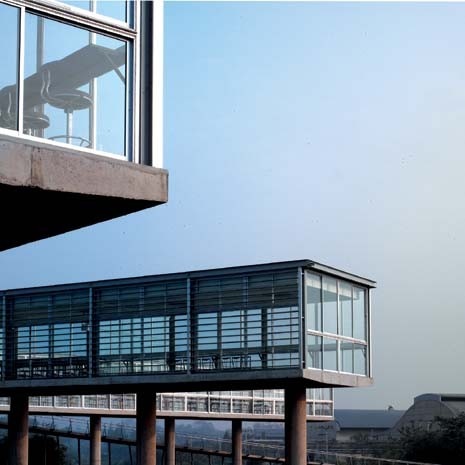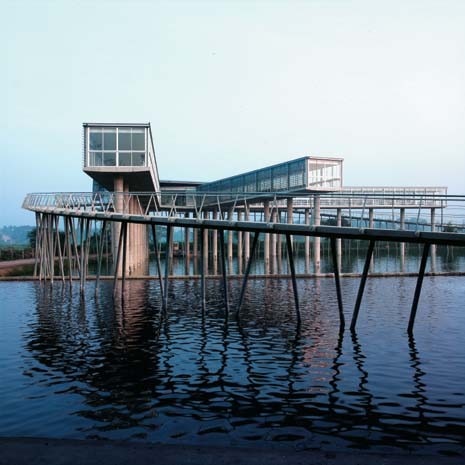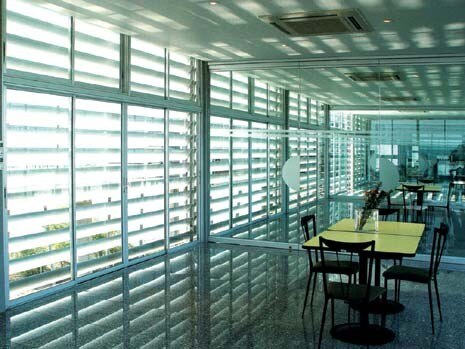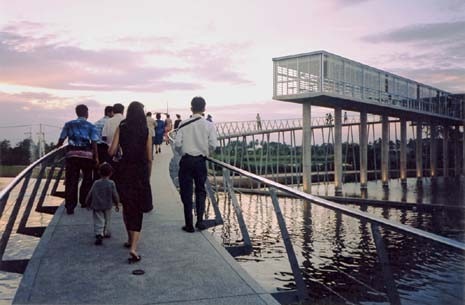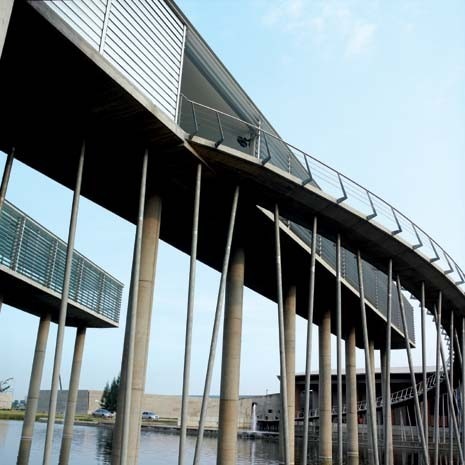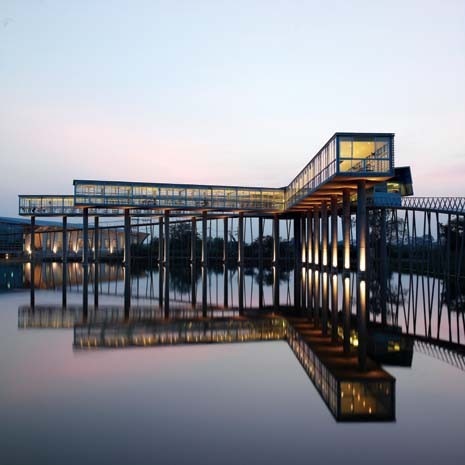The two of them make up Exposure Architects, the office that designed the dining hall of Satin Textile. The dining room is located in the centre of a manufacturing plant’s ‘campus’, a concept based on a strongly social project, and conceived by Exposure and Satin Textile’s owner, who happens to be none other than Schle Wood. Situated above a small artificial lake made from the cooling system drainage water, the dining hall stands elevated by about 8 metres, so as to create a physical and psychological caesura with regards to the factory’s surrounding structures. This lends an unusual viewpoint to the industrial and natural landscape. From here, slender iron shanks support a bridge that connects the three factory buildings and fans out over the site like the fingers of an open hand.
Based on the strength of its guiding concept (the web of a spider or the tentacles of an octopus, if we are to be led by the compound name that the project has been given), Octospider is also an intelligent revisiting of the architectural promenade concept and a study on centrality in the relationship between volume and space. It originates in the obvious pleasure of organising a neo-constructivist pathway along which one encounters a curved generator with four interpenetrating, resolute, sharp lines. It is finalised in the contrast between the opposite principles of the weightiness of matter and the lightness of an upward thrust that is made possible by 12 centimetre diameter poles up to 8 metres long, nearly at the limit of their tensile strength.
